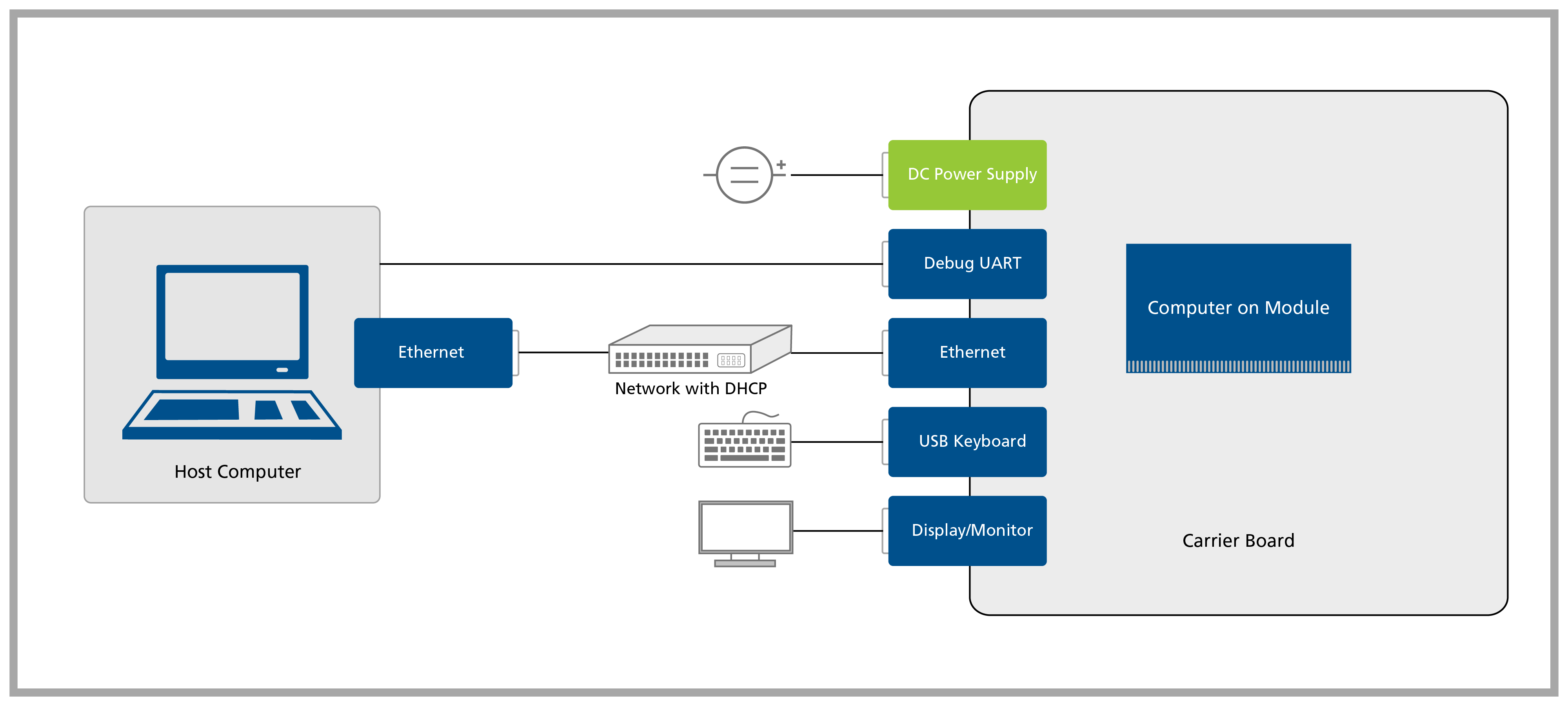Unboxing and Setup Cables - Aster
Overview
In this first lesson, you will go through the process of unboxing your System on Module and carrier board and assembling all the hardware.
A block diagram of the system setup and its connections is presented below for reference.

Prerequisites
Step 1
1.1 Remove the Aster Carrier Board and the Colibri System on Module from the blisters.
Step 2
The Aster Carrier Board provides two ways to power the board: a standard 3.5mm power jack barrel connector using an external DC power supply and a USB Micro B connector (X4). In this guide, we will power the board via the micro USB connector. Therefore, it is necessary to close the jumper JP1, as shown in the image.

The total power consumption of the system depends on the module/peripheral/accessories used. Please note that power available via the micro USB connector may not be sufficient for modules or applications with high power requirements, since this configuration is not fully USB compliant. In such cases, it is recommended to use an external power supply to power the system. While using an external power supply, please remove the shunt jumper (if any) from the USB Power Jumper (JP1) in order to avoid short-circuiting the USB and external power supplies.

If you decide to power on the board from USB, make sure that you use a high quality and short cable. Long cables are known for making the Aster reboot intermittently due to voltage drop on the cable. Besides that, do not use USB Hubs. Connect the carrier board directly to your PC.

Step 3
3.1 Plug a VGA monitor into the Aster's X13 connector.
3.2 Plug a USB keyboard into the Aster's X9 connector.
3.3 Plug the Ethernet cable into the Aster's X8 connector.
Ethernet network must provide DHCP and Internet to the module.
3.4 Plug a USB Micro B to Type-A cable into X10 if you want to enter Recovery Mode and load the Toradex Easy Installer. Be sure that nothing is plugged at the lower connector of X9.
3.5 Plug a USB Micro B to Type-A cable into X4. Be sure that the jumper JP1 is closed.
Note that the micro USB connector (X4) can be employed as a means to power the system and also has an integrated USB-serial converter that provides access to the system on module debug serial port.